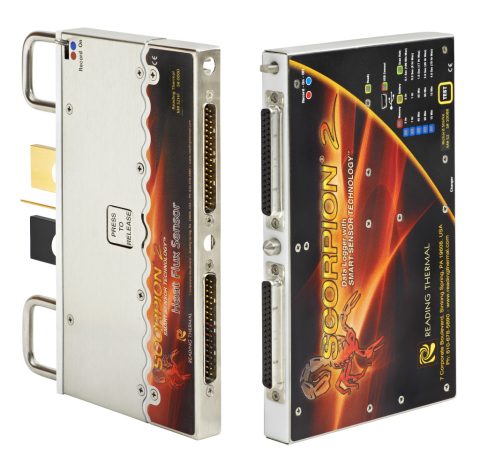When an oven has hot spots, achieving uniform results becomes a major challenge. Some products bake too quickly, others take too long, and suddenly, your perfect recipe isn’t so perfect anymore. That’s where thermal profiling systems for industrial ovens in bakeries come in. By identifying and correcting temperature inconsistencies, technology from Reading Thermal helps bakeries ensure their ovens work as efficiently and accurately as possible.
Understanding Oven Hot Spots
Hot spots happen when certain areas in an oven heat up more than others. These uneven temperature zones can lead to overbaking in one section while leaving other areas underbaked. For high-volume production, this means wasted ingredients, inconsistent products, and customer dissatisfaction.
Several factors can contribute to oven hot spots. Airflow disruptions, faulty heating elements and even minor variations in oven design can create uneven heat distribution. In large industrial ovens, these inconsistencies are often hard to detect without the right tools. That’s why thermal profiling is such a game-changer.
Using Thermal Profiling to Identify Hot Spots
Thermal profiling records and analyzes temperature data throughout the oven, creating a detailed heat map of the baking process. With this data, bakers can see exactly where temperature fluctuations are occurring and make the necessary adjustments.
A good thermal profiling system – such as the SCORPION® 2 Profiling System from Reading Thermal – measures not just temperature but also energy transfer, humidity and air velocity. These factors work together to determine how evenly an oven bakes. If one zone has restricted airflow, the heat may not be distributed properly, leading to temperature imbalances. By pinpointing these trouble areas, bakers can fine-tune their oven settings, adjust airflow, or recalibrate heating elements to ensure even baking.
Adjusting Oven Settings for More Even Baking
Once you’ve identified where the hot spots are, the next step is making adjustments. Sometimes, it’s as simple as modifying conveyor speed, altering the placement of baking trays, or redistributing airflow. Other times, the issue might be mechanical, requiring maintenance or recalibration.
Airflow is a major factor in hot spot formation. If the heat isn’t circulating properly, some sections of the oven will inevitably run hotter than others. Checking for blocked vents, ensuring proper fan function, and repositioning air baffles can significantly improve even heat distribution.
If the issue is related to the heating elements themselves, recalibrating or replacing worn-out components may be necessary. Ovens experience wear and tear over time, and temperature inconsistencies can often be traced back to aging equipment. Regular maintenance, guided by data from thermal profiling, helps keep everything running smoothly.
The Role of Thermal Profiling in Long-Term Oven Performance
Thermal profiling isn’t just about fixing one-time issues. It’s a long-term tool for maintaining optimal baking conditions. By running periodic thermal profiles, bakeries can track temperature trends and catch problems before they become major issues.
Keeping Your Oven Running at Its Best
Troubleshooting oven hot spots doesn’t have to be a frustrating guessing game. Thermal profiling systems for industrial ovens in bakeries from Reading Thermal help bakers gather real data, identify problem areas, and make precise adjustments to improve consistency. Investing in our SCORPION® 2 Profiling System means fewer wasted batches, happier customers, and a more efficient baking operation. Put our system to the test by contacting us online or giving us a call at 610-678-5890.

